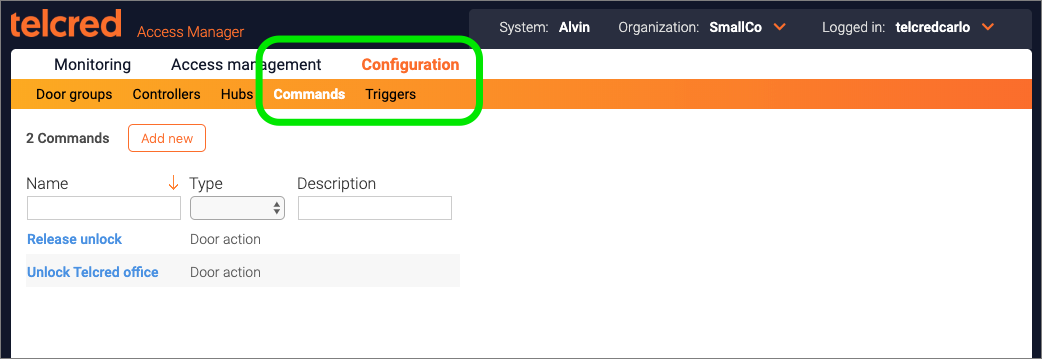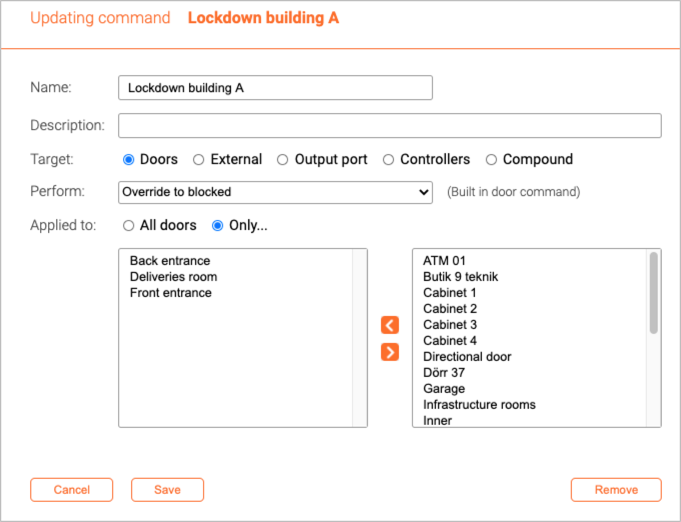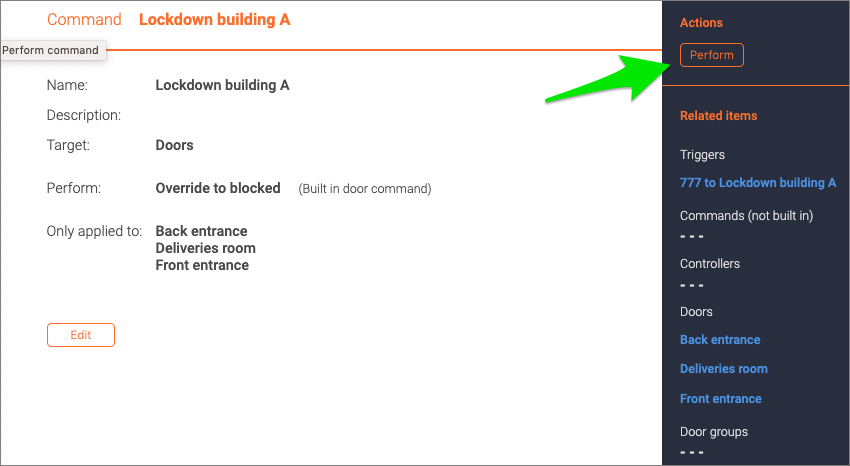Commands: Difference between revisions
Jump to navigation
Jump to search
Telcredstaff (talk | contribs) |
Telcredstaff (talk | contribs) |
||
| Line 21: | Line 21: | ||
[[File:new-command.png|New command]] |
[[File:new-command.png|New command]] |
||
It is possible to perform (or "run") the command straight from its detail page: |
|||
[[File:perform-command.png|Perform command]] |
|||
Revision as of 12:37, 12 November 2019
Overview
A command is defined as a set of one or more predefined actions that can either be performed by an administrator or as a result of a predefined trigger event. Commands and triggers are found under the Configuration section in the main menu.
Some use cases for commands and triggers include:
- Perform an action simultaneously on a number of doors, a door group, or a combination (e.g. block all doors in a section of the building to achieve a "lockdown").
- Interact with an external system (e.g. arm or disarm an intrusion detection system)
- Allow end users to perform an action normally only available to administrators (e.g. unlock a door or return it to schedule)
Commands
When creating a new command, you need to give it a name and define which type it is:
- Door action. Performs an action on one or more doors. The actions available are the same that the administrator can perform from the door detail page.
- External. Will make an http request to an external system. It is possible to specify the URL, http method and body.
- Compound. Includes commands already defined, which can be either door action or external. This allows the administrator to create a command which both affects doors and can interact with an external system (e.g. block all doors in one building and make an http request to the alarm center).
It is possible to perform (or "run") the command straight from its detail page:


